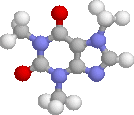|
|
|
|
|
|
|
|
|
Prof. UAM dr hab. Michał Banaszak
|
|
|
Profesor UAM
|
|
|
 0000-0003-0106-632X 0000-0003-0106-632X
 2845620 / A-9411-2010 2845620 / A-9411-2010
 6603615390 6603615390
|
|
|
|
|
|
|
|
|
Publikacje
Doktorzy
Magistrowie
Licencjusze
Seminaria
|
23. |
Wołoszczuk S., Jurga S., Banaszak M. |
|
|
|
|
|
Physical Review E, 94(2), 022502 (2016) |
|
|
DOI: 10.1103/PhysRevE.94.022502 (Pobrane: 2020-10-23) |
|
|
|
22. |
Wołoszczuk S., Banaszak M., Knychała P., Lewandowski K., Radosz M. |
|
|
|
|
|
Journal of Non-Crystalline Solids, 354(35-39), 4138-4142 (2008) |
|
|
DOI: 10.1016/j.jnoncrysol.2008.06.022 (Pobrane: 2020-10-21) |
|
|
|
21. |
Wołoszczuk S., Banaszak M., Knychała P., Radosz M. |
|
|
|
|
|
Macromolecules, 41(15), 5945-5951 (2008) |
|
|
DOI: 10.1021/ma0718346 (Pobrane: 2020-10-23) |
|
|
|
20. |
Śliwińska-Bartkowiak M., Ratajczak B., Golibrocki L., Banaszak M. |
|
|
|
|
|
Journal of Chemical Physics, 124(14), 144516 (2006) |
|
|
DOI: 10.1063/1.2191052 (Pobrane: 2020-10-23) |
|
|
|
19. |
Wołoszczuk S., Banaszak M., Jurga S., Pakuła T., Radosz M. |
|
|
|
|
|
Journal of Chemical Physics, 121(23), 12044-12049 (2004) |
|
|
DOI: 10.1063/1.1812751 (Pobrane: 2020-10-21) |
|
|
|
18. |
Kuroczycki B., Banaszak M., Jurga S. |
|
|
|
|
|
Computational Methods in Science and Technology, 10(2), 161-167 (2004) |
|
|
DOI: 10.12921_cmst.2004.10.02.161-167
WWW: http://cmst.eu/wp-content/uploads/files/10.12921_cmst.2004.10.02.161-167_Kuroczycki.pdf (Pobrane: 2020-10-23) |
|
|
|
17. |
Wołoszczuk S., Banaszak M., Jurga S., Radosz M. |
|
|
|
|
|
Computational Methods in Science and Technology, 10(2), 219-228 (2004) |
|
|
DOI: 10.1292/cmst.2004.10.02.219-228
WWW: http://cmst.eu/wp-content/uploads/files/10.12921_cmst.2004.10.02.219-228_Woloszczuk.pdf |
|
|
|
16. |
Banaszak M., Wołoszczuk S., Jurga S., Pakuła T. |
|
|
|
|
|
Journal of Chemical Physics, 119(21), 11451-11457 (2003) |
|
|
DOI: 10.1063/1.1622375 (Pobrane: 2020-10-21) |
|
|
|
15. |
Banaszak M., Wołoszczuk S., Pakuła T., Jurga S. |
|
|
|
|
|
Physical Review E - Statistical, Nonlinear, and Soft Matter Physics, 66(3), 031804 (2002) |
|
|
DOI: 10.1103/PhysRevE.66.031804 |
|
|
|
14. |
Banaszak M., Radosz M. |
|
|
|
|
|
Fluid Phase Equilibria, 193(1-2), 179-189 (2002) |
|
|
DOI: 10.1016/S0378-3812(01)00730-0 (Pobrane: 2020-10-21) |
|
|
|
13. |
Banaszak M. |
|
|
|
|
|
Task Quartely, 5(1), 17-27 (2001) |
|
|
WWW: http://task.gda.pl/quart/
ISSN: 1428-6394 (Pobrane: 2021-01-07) |
|
|
|
12. |
Banaszak M. |
|
|
|
|
|
Computational Methods in Science and Technology, 6, 15-24 (2000) |
|
|
DOI: 10.12921_cmst.2000.06.01.15-24 |
|
|
|
11. |
Banaszak M., Clarke J.H.R. |
|
|
|
|
|
Physical Review E - Statistical, Nonlinear, and Soft Matter Physics, 60(5), 5753-5756 (1999) |
|
|
DOI: 10.1103/PhysRevE.60.5753 |
|
|
|
10. |
Chen C.K., Banaszak M., Radosz M. |
|
|
|
|
|
Journal of Physical Chemistry B, 102(13), 2427-2431 (1998) |
|
|
DOI: 10.1021/jp9731819 |
|
|
|
9. |
Banaszak M., Chen C.K., Radosz M. |
|
|
|
|
|
Macromolecules, 29(20), 6481-6486 (1996) |
|
|
DOI: 10.1021/ma9517815 |
|
|
|
8. |
Banaszak M., Chiew Y.C., Radosz M. |
|
|
|
|
|
Fluid Phase Equilibria, 111(2), 161-174 (1995) |
|
|
DOI: 10.1016/0378-3812(95)02736-X (Pobrane: 2020-10-23) |
|
|
|
7. |
Chen S.J., Banaszak M., Radosz M. |
|
|
|
|
|
Macromolecules, 28(6), 1812-1817 (1995) |
|
|
DOI: 10.1021/ma00110a014 |
|
|
|
6. |
Banaszak M., Chiew Y.C., Olenick R., Radosz M. |
|
|
|
|
|
Journal of Chemical Physics, 100(5), 3803-3807 (1994) |
|
|
DOI: 10.1063/1.466368 (Pobrane: 2020-10-23) |
|
|
|
5. |
Banaszak M., Petsche I.B., Radosz M. |
|
|
|
|
|
Macromolecules, 26(2), 391-395 (1993) |
|
|
DOI: 10.1021/ma00054a020 |
|
|
|
4. |
Banaszak M., Chiew Y.C., Radosz M. |
|
|
|
|
|
Physical Review E - Statistical, Nonlinear and Soft Matter Physics, 48(5), 3760-3765 (1993) |
|
|
DOI: 10.1103/PhysRevE.48.3760 (Pobrane: 2020-10-23) |
|
|
|
3. |
Banaszak M., Whitmore M.D. |
|
|
|
|
|
Macromolecules, 25(1), 249-260 (1992) |
|
|
DOI: 10.1021/ma00027a042 |
|
|
|
2. |
Banaszak M., Whitmore M.D. |
|
|
|
|
|
Macromolecules, 25(10), 2757-2770 (1992) |
|
|
DOI: 10.1021/ma00036a030 |
|
|
|
1. |
Banaszak M., Whitmore M.D. |
|
|
|
|
|
Macromolecules, 25(13), 3406-3412 (1992) |
|
|
DOI: 10.1021/ma00039a015 (Pobrane: 2020-10-23) |
|
|
|
1. |
dr Sebastian Wołoszczuk |
|
|
Zachowanie fazowe i temperaturowe zmiany strukturalne w stopach i roztworach kopolimerów dwu-, trój- i wieloblokowych badane metodami Monte Carlo |
|
|
2008-01-29 |
|
|
Promotor: prof. UAM, dr hab. Michał Banaszak
|
|
|
|
3. |
mgr Aleksander Góral |
|
|
System zarządzający publikacjami naukowymi |
|
|
2007-12-21 |
|
Promotor: prof. UAM, dr hab. Michał Banaszak
Opiekun naukowy: dr Zbigniew Fojud
|
|
|
|
2. |
mgr Tomasz Serwatka |
|
|
Nowy zaawansowany interfejs programowy danych eksperymentalnych DSC w oparciu o technologię RAD Delphi |
|
|
2006-11-20 |
|
Promotor: dr hab. Michał Banaszak
Opiekun naukowy: dr Zbigniew Fojud
|
|
|
|
1. |
mgr Przemysław Frankiewicz |
|
|
Programowa konwersja narzędzi analizy danych NMR pomiędzy platformami Motorola / Intel |
|
|
2006-11-20 |
|
Promotor: dr hab. Michał Banaszak
Opiekun naukowy: dr Zbigniew Fojud
|
|
|
|
5. |
mgr Artem Nowicki |
|
|
Zastosowanie obliczeń równoległych w fizyce na przykładzie symulacji dynamiki molekularnej |
|
|
2004-06-30 |
|
Promotor: prof. dr hab. Stefan Jurga
Opiekun naukowy: dr Michał Banaszak
|
|
|
|
4. |
mgr Radosław Ostojski |
|
|
Właściwości modelowanej cieczy dwuskładnikowej badane metodą symulacji Monte Carlo |
|
|
2004-06-30 |
|
Promotor: prof. dr hab. Stefan Jurga
Opiekun naukowy: dr Michał Banaszak
|
|
|
|
3. |
mgr Sebastian Wołoszczuk |
|
|
Badanie struktury i przejść fazowych stopów kopolimerów dwublokowych metodą symulacji komputerowej |
|
|
2003-06-30 |
|
Promotor: prof. dr hab. Stefan Jurga
Opiekun naukowy: dr Michał Banaszak
|
|
|
|
2. |
mgr Marek Borkowski |
|
|
Wizualizacja dwu-ciągłych konfiguracji kopolimerów generowanych w symulacjach Monte-Carlo |
|
|
2003-06-30 |
|
Promotor: prof. dr hab. Stefan Jurga
Opiekun naukowy: dr Michał Banaszak
|
|
|
|
1. |
mgr Bartosz Kuroczycki |
|
|
Symulacja komputerowa dwuwymiarowego układu twardych kul |
|
|
2001-06-30 |
|
Promotor: prof. dr hab. Stefan Jurga
Opiekun naukowy: dr Michał Banaszak
|
|
|
|
3. |
lic Radosław Ostojski |
|
|
System wizualizacji molekuł w oparciu o środowisko www |
|
|
2001-06-30 |
|
Promotor: prof. dr hab. Stefan Jurga
Opiekun naukowy: dr Michał Banaszak
|
|
|
|
2. |
lic Leszek Banach |
|
|
Symulacje komputerowe metodą dynamiki molekularnej na klastrze komputerów PC |
|
|
2001-06-30 |
|
Promotor: prof. dr hab. Stefan Jurga
Opiekun naukowy: dr Michał Banaszak
|
|
|
|
1. |
lic Sebastian Wołoszczuk |
|
|
Symulacje komputerowe kopolimerów trójblokowych z wykorzystaniem algorytmu ruchów kooperatywnych |
|
|
2001-06-30 |
|
Promotor: prof. dr hab. Stefan Jurga
Opiekun naukowy: dr Michał Banaszak
|
|
|
|
19. |
dr hab. Michał Banaszak
|
|
|
2007-03-16
|
|
|
|
|
|
|
18. |
dr hab. Michał Banaszak
|
|
|
2007-03-01
|
|
|
|
|
|
|
17. |
dr hab. Michał Banaszak
|
|
|
2006-03-16
|
|
|
|
|
|
|
16. |
dr hab. Michał Banaszak
|
|
|
2006-02-24
|
|
|
|
|
|
|
15. |
dr hab. Michał Banaszak
|
|
|
2005-03-31
|
|
|
|
|
|
|
14. |
dr hab. Michał Banaszak
|
|
|
2005-03-08
|
|
|
|
|
|
|
13. |
dr Michał Banaszak
|
|
|
2005-01-13
|
|
|
|
|
|
|
12. |
dr Michał Banaszak
|
|
|
2004-03-24
|
|
|
|
|
|
|
11. |
dr Michał Banaszak
|
|
|
2004-03-04
|
|
|
|
|
|
|
10. |
dr Michał Banaszak
|
|
|
2003-02-13
|
|
|
|
|
|
|
9. |
dr Michał Banaszak
|
|
|
2002-04-04
|
|
|
|
|
|
|
8. |
dr Michał Banaszak
|
|
|
2001-11-16
|
|
|
|
|
|
|
7. |
dr Michał Banaszak
|
|
|
2001-11-08
|
|
|
|
|
|
|
6. |
dr Michał Banaszak
|
|
|
2001-03-22
|
|
|
|
|
|
|
5. |
dr Michał Banaszak
|
|
|
2001-03-01
|
|
|
|
|
|
|
4. |
dr Michał Banaszak
|
|
|
2000-05-04
|
|
|
|
|
|
|
3. |
dr Michał Banaszak
|
|
|
1999-10-28
|
|
|
|
|
|
|
2. |
dr Michał Banaszak
|
|
|
1999-10-12
|
|
|
|
|
|
|
1. |
dr Michał Banaszak
|
|
|
1997-03-27
|
|
|
| | University of Manchester, UK |
|
|
|
|
|
|

